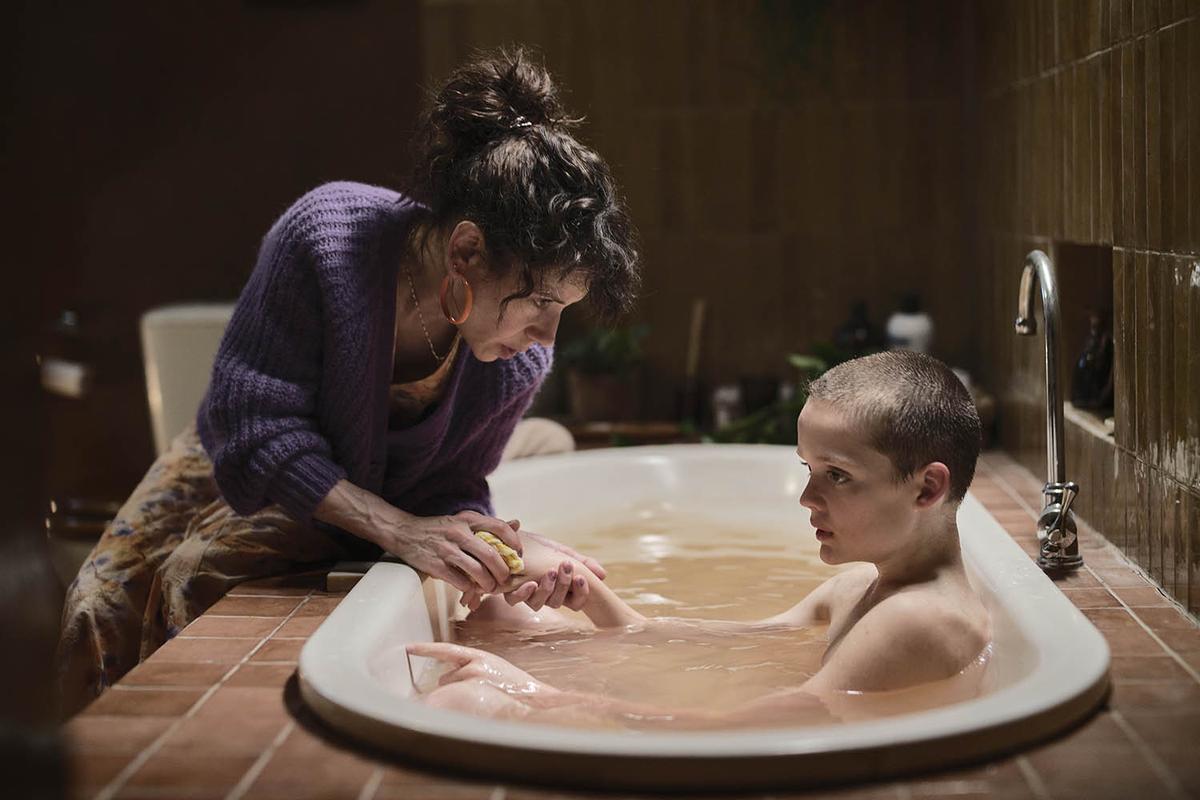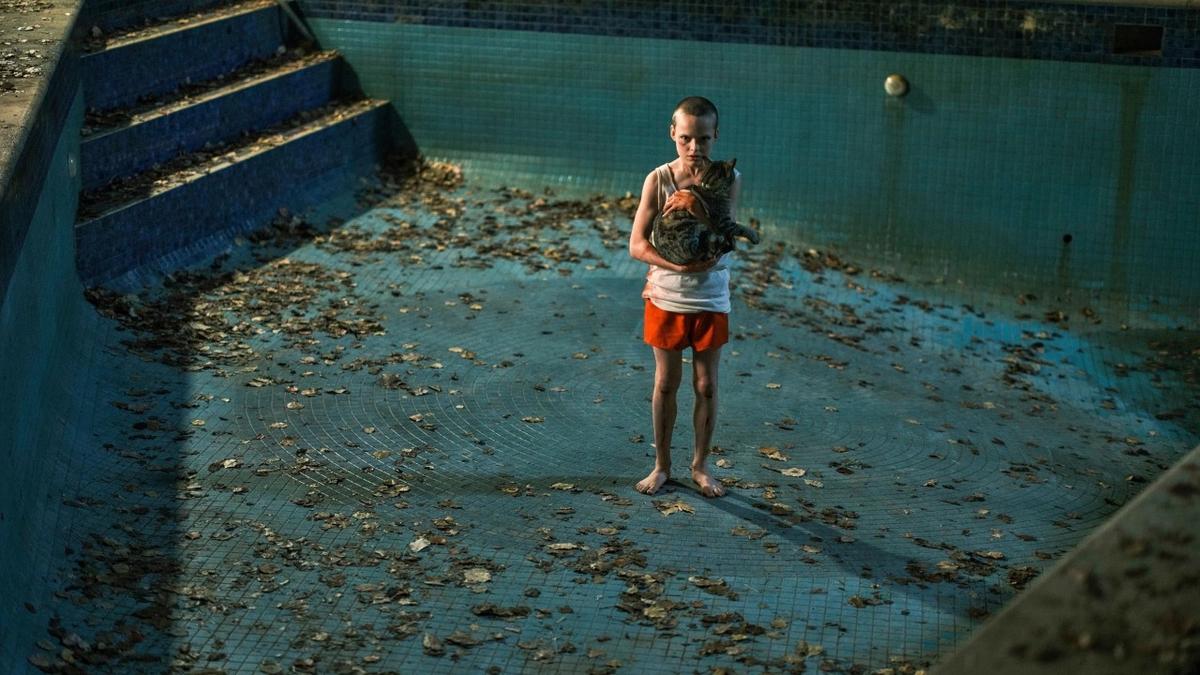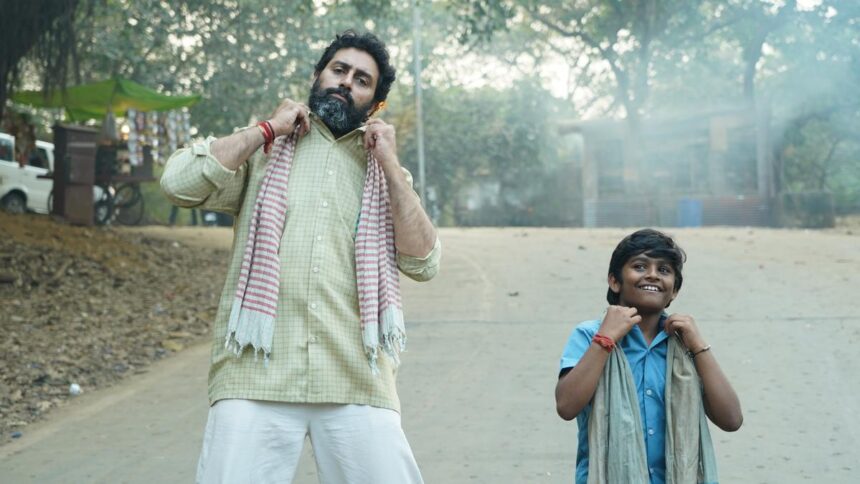Horror films live or die on the bad decisions of their characters. The Philippou brothers understand this better than most. In their terrific debut, Talk to Me, teenagers treated a cursed embalmed hand as a party trick. It was youthful bravado in its purest, stupidest form. Their follow-up, Bring Her Back, is also built on bad decisions, but these were the kind made by people too young to know better and by adults who should know better, which is precisely what makes it unbearable to watch. Evil, even.

The film opens with a jolt of grainy VHS footage that depicts some sort of snuff tape-séance ritual taking place with bodies dangling, faces mangled and children’s voices shrieking with glee or terror, hard to tell which. The footage recurs throughout the film like a bad memory, and the Philippous let it fester, unresolved.
Bring Her Back (English)
Director: Danny and Michael Philippou
Cast: Sally Hawkins, Billy Barratt, Sora Wong, Jonah Wren Phillips
Runtime: 104 minutes
Storyline: A brother and sister witness a terrifying ritual at the secluded home of their new foster mother
Andy (Billy Barratt), seventeen and still carrying the scars of his father’s abuse, comes home one afternoon with his half-sister Piper (Sora Wong), who is legally blind, to find their father dead in the shower. With adulthood just months away, Andy is determined to become Piper’s guardian. Meanwhile the child services see only two vulnerable minors, and hand them over to Laura (Sally Hawkins), a creepy, foster mother.
We know Hawkins better from the warmth of her eccentricities, like the gentle cleaner in The Shape of Water and the twinkly Mrs. Brown in Paddington. Here, she turns that warmth inside out. Laura smothers Piper with affection, insisting that she and her dead daughter are “the same,” while insidiously undermining Andy at every turn. She spikes the kids with booze, stages manic midnight trauma-dump dance parties, and humiliates Andy in ways designed to erode his sense of self. But the cruelty isn’t grandiose or gothic. It’s intimate and domestic, and therefore so much more excruciating.

A still from ‘Bring Her Back’
| Photo Credit:
A24
Barratt plays Andy with a jittery defensiveness, convinced that if he can just survive the next three months he can save his sister. Wong, in her first role, has a natural, watchful stillness that makes Piper’s gullibility feel earned, but her moments of cunning, all the more impressive. And though their bond is the film’s fragile core, it’s Hawkins who dominates the screen. She plays Laura as a monster in hiding, but also makes her monstrosity obvious enough to make us squirm.
But Jonah Wren Phillips is the film’s revelation, whose mute foster child Oliver’s creeping presence colonises every corner. With his blank scowl, bruised eye, and almost angelic androgyny, Phillips gives one of those rare child performances that feel instantly etched into the horror canon. This disturbing brand of non-cooperation recalls Linda Blair or Harvey Stephens and secures Phillips as a horror all-timer before his voice has even broken.
The Philippous use the house’s cavernous rooms and drained swimming pool like psychological traps, like spaces that seem designed to unmoor the children. Rain seeps into everything, from the tiles, to the furniture, to the air; until the entire film feels waterlogged. Their flashy visual language of needle drops and camera spins has shifted since Talk to Me. The focus now is on viscous textures of blood, drool, piss, rainwater staining every frame.

What saves Bring Her Back from collapsing under its own cruelty is the Philippous’ perverse fidelity to the physical. This is a masterclass in staging the indignities of the body. Blood is a sticky, congealing mess, while drool clings to lips and piss stains fabric. The sound design doubles down on these corporeal violations with bones protesting, knives worrying their way through flesh, and teeth detonating like porcelain. These effects owe nothing to the slick sadism of torture porn and everything to the clammy tactility of J-horror. They infest you, crawling under your skin with the intent to stay there.
What distinguishes Bring Her Back from so much of contemporary horror is how the Philippous refuse to outsource this sick, twisted evil to metaphor. The genre has become fluent in allegory, and by contrast, the Philippous place us in the thick of it. Laura’s manipulation of Andy and Piper is not a stand-in for trauma, rather the trauma itself, unfolding in real time. These kids are devoid of any convenient vantage point or ironic safety buffer, so the complicity of watching them navigate the terrible bind of needing the love of someone who harms them, feels debilitating.

A still from ‘Bring Her Back’
| Photo Credit:
A24
The film is deliberately messy. Its dubious mythology of chalk circles, occult VHS footage, and voodoo locks of hair, never quite adds up as satisfyingly as it did in Weapons, earlier this month. But coherence isn’t the goal here, because the Philippous are chasing a series of sensations — like the sickening dread of being a child in the wrong house, or the anxiety-inducing uncertainty of whether an adult’s affection is protection or predation.
Bring Her Back is ultimately powered by Hawkins’s performance, in one of the great villain turns of recent horror. Laura feels as though kindness itself were a mask that could suffocate a child, and it’s terrifying because of how recognisably human it is. The film gnaws at that primal fear that children are defenceless against the very people entrusted with their care, even (and often, especially) in safety nets meant to protect them.

The Philippou brothers may not yet be the new kings of horror, but with Bring Her Back they’ve at least proven themselves its most sadistic purveyors of the decade — pushing us into yet another nightmare we’d rather not face and locking the door behind us.
Bring Her Back is currently running in theatres
Published – August 22, 2025 05:03 pm IST





















